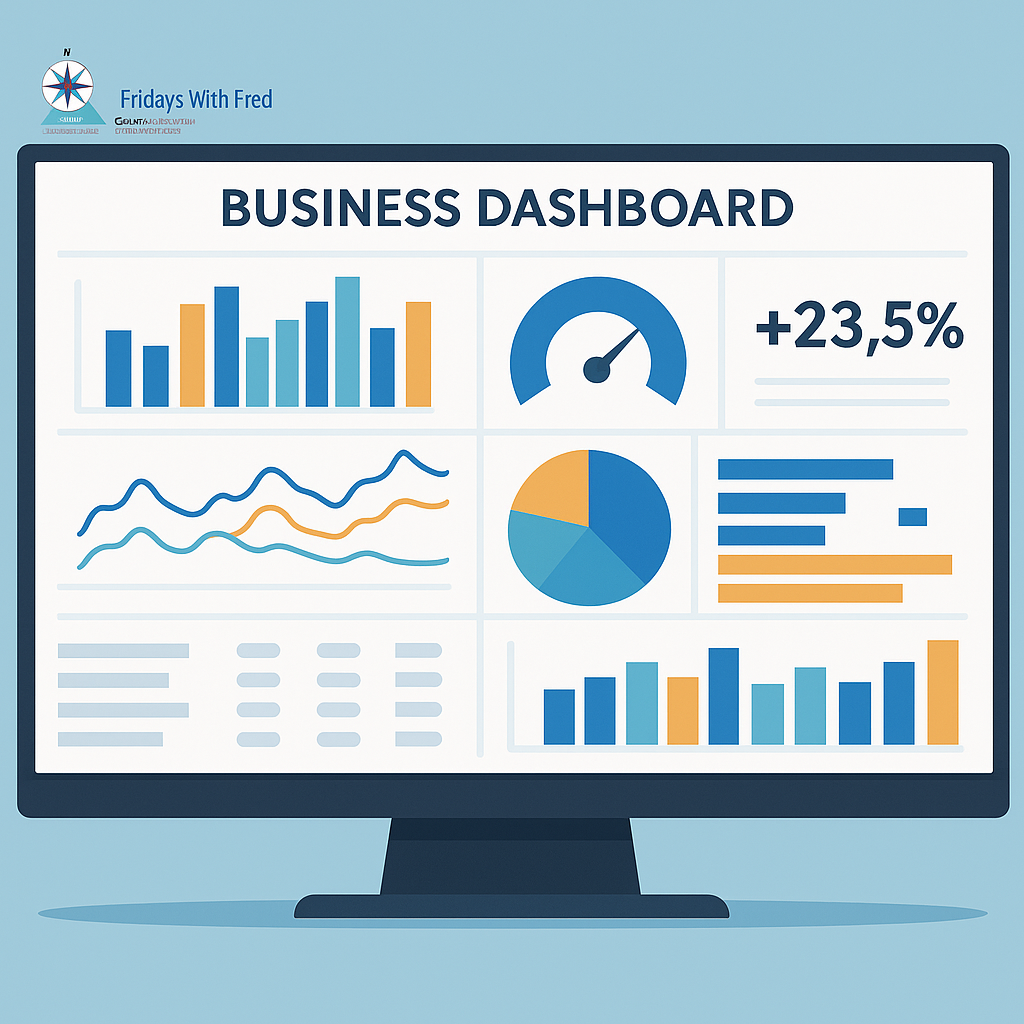In today’s fast-paced business environment, organizations are under constant pressure to monitor performance, respond quickly to change, and make decisions based on reliable data. A business dashboard has emerged as one of the most effective tools to meet these demands. Acting as a centralized hub, it brings together data from multiple sources and translates it into real-time insights.
By using visual elements like charts, graphs, and tables, dashboards turn complex information into an accessible overview, enabling teams and leaders to understand business health at a glance.
What is a Business Dashboard?
A business dashboard is a visual tool designed to display key performance indicators (KPIs) and other essential data points in one place. Rather than sifting through spreadsheets or multiple software platforms, leaders can use dashboards to see consolidated information in an easy-to-interpret format. Dashboards draw data from systems such as customer relationship management (CRM) tools, financial software, marketing platforms, and social media analytics, offering an integrated perspective on business operations.
The goal is simple: to make complex data digestible and actionable, empowering organizations to focus on what matters most. Whether it’s monitoring daily sales, tracking customer satisfaction, or identifying areas of operational inefficiency, dashboards provide the clarity needed for informed decision-making.
Key Functions of a Business Dashboard
A well-designed dashboard offers several vital functions that go beyond basic reporting:
- Data Visualization: Raw numbers are often overwhelming and difficult to interpret. Dashboards transform this data into clear charts, graphs, and tables, making patterns and trends instantly recognizable.
- Real-time Monitoring: Unlike static reports, dashboards update continuously, reflecting live data. This ensures that decision-makers always have the most current picture of performance.
- KPI Tracking: Dashboards focus on the most critical business metrics—such as revenue growth, profit margins, customer acquisition rates, or web traffic—so that teams can measure progress toward strategic goals.
- Data Integration: By pulling data from multiple platforms into a single view, dashboards eliminate silos. Leaders gain a unified perspective of how different departments contribute to overall success.
- Strategic Decision-Making: By highlighting trends and anomalies, dashboards equip managers with the insights needed to respond quickly, correct course when necessary, and plan future initiatives.
Benefits of Business Dashboards
The value of dashboards lies not only in the data they present, but also in the business outcomes they enable. Key benefits include:
- Improved Visibility: Dashboards provide a bird’s-eye view of the organization. By consolidating data across functions like sales, marketing, finance, and operations, leaders gain comprehensive visibility into performance.
- Faster Response Time: With real-time insights, businesses can respond immediately to opportunities or challenges. Whether it’s adjusting a marketing campaign, addressing a supply chain issue, or capitalizing on a sales trend, dashboards support agility.
- Enhanced Alignment: Because dashboards present a unified view of performance, all departments remain focused on shared goals. This alignment reduces miscommunication and ensures that teams are working toward the same outcomes.
- Actionable Insights: Beyond reporting, dashboards highlight what actions should be taken. For example, if customer satisfaction scores dip, leaders can investigate root causes and implement corrective measures quickly.
Strategic Role in Business Growth
Ultimately, dashboards are not just reporting tools; they are strategic enablers. They empower organizations to shift from reactive management to proactive leadership. By continuously monitoring KPIs and spotting emerging patterns, businesses can anticipate challenges and seize new opportunities.
For executives, dashboards serve as a decision-support system, ensuring that strategies are grounded in real data rather than assumptions. For teams, they act as motivational tools, clarifying expectations and showing progress in real time.
Conclusion
In an age where data drives competitive advantage, a business dashboard has become an indispensable resource. Its ability to visualize, monitor, and integrate data transforms the way organizations plan and operate. By offering clarity, speed, and actionable insights, dashboards equip businesses to thrive in dynamic markets.
Whether the focus is on improving profitability, enhancing customer satisfaction, or streamlining operations, dashboards deliver the intelligence needed to move forward with confidence. For any organization committed to growth and innovation, adopting and leveraging a robust dashboard system is no longer optional—it’s essential.
Be well, do good work, and keep in touch.
Fred



